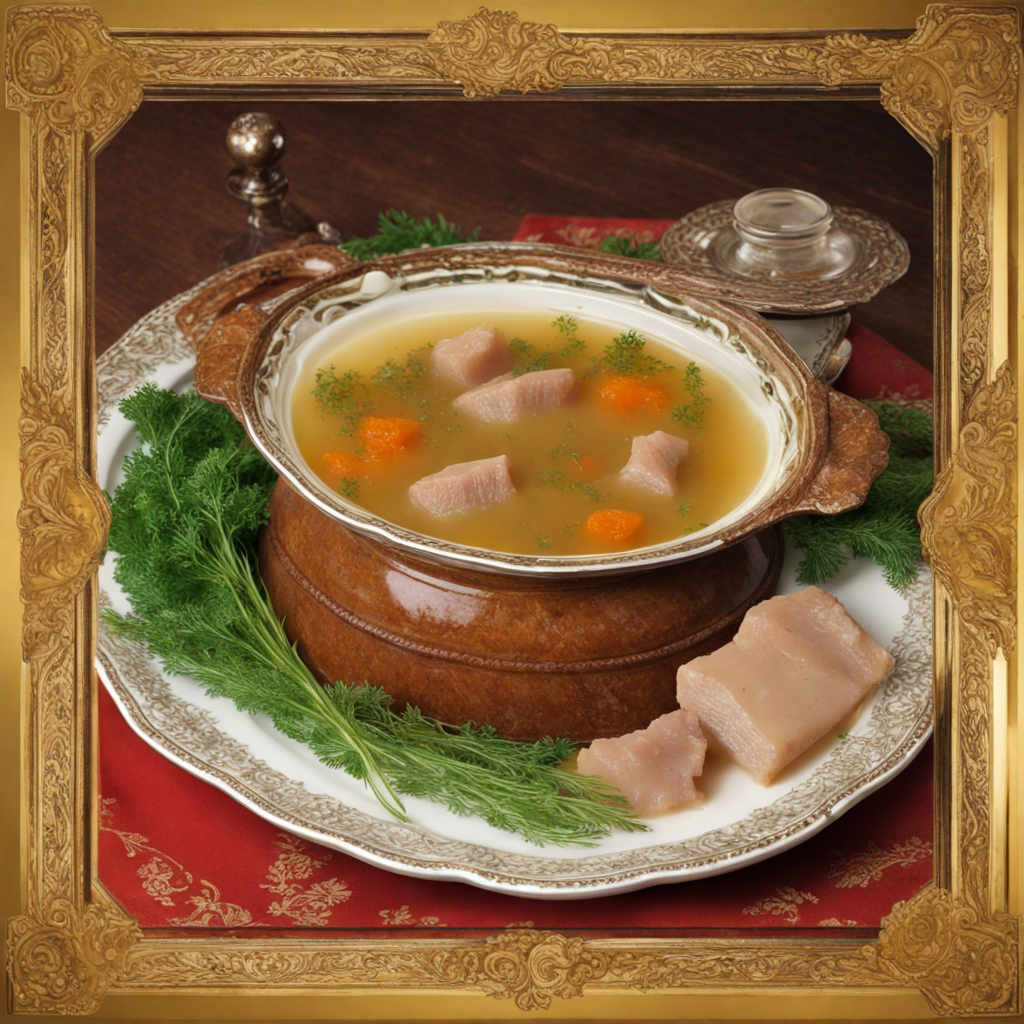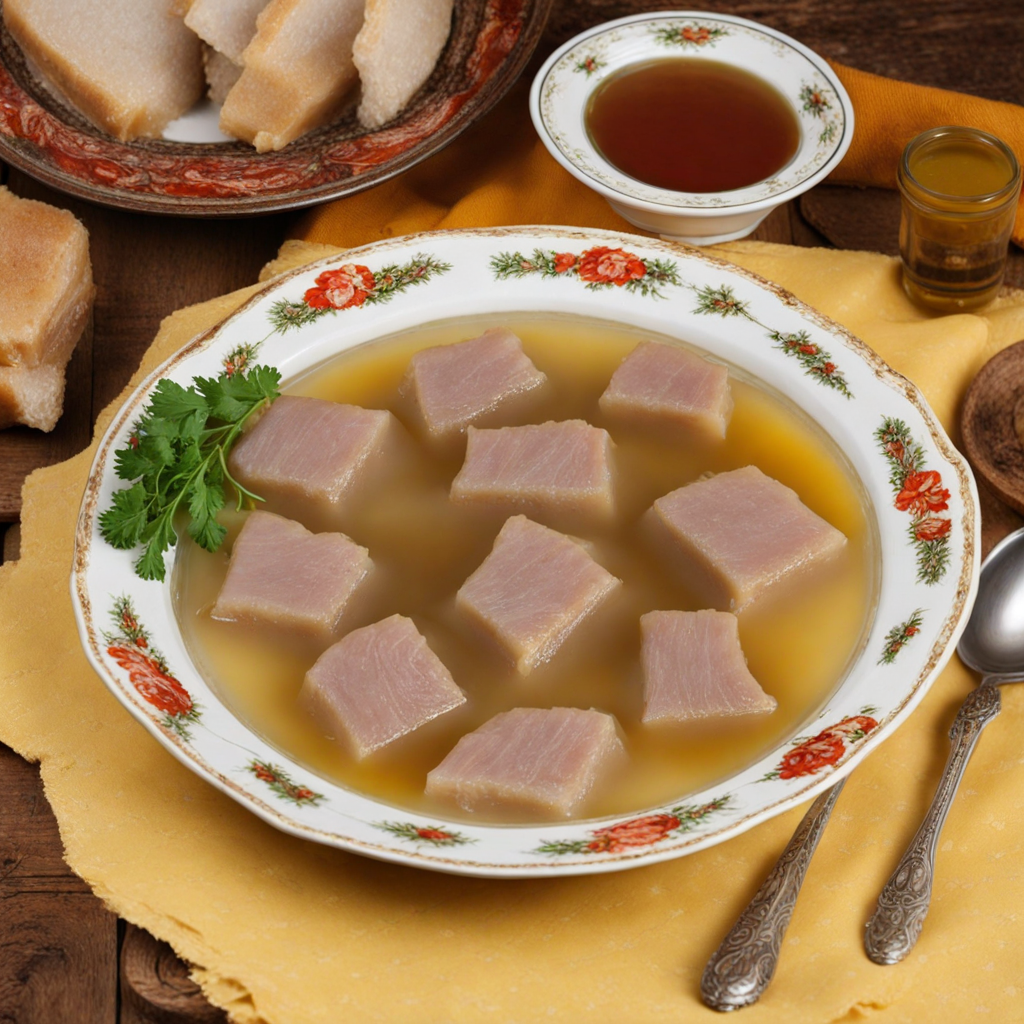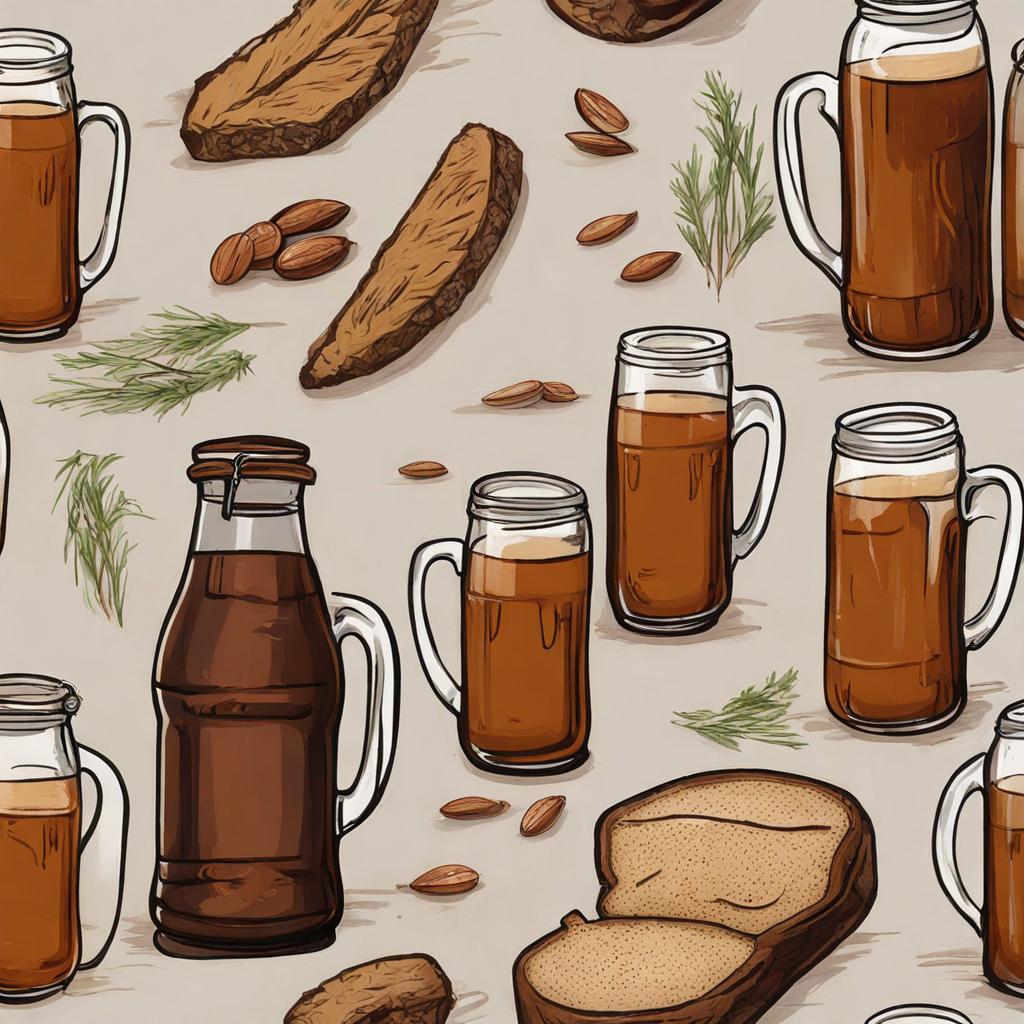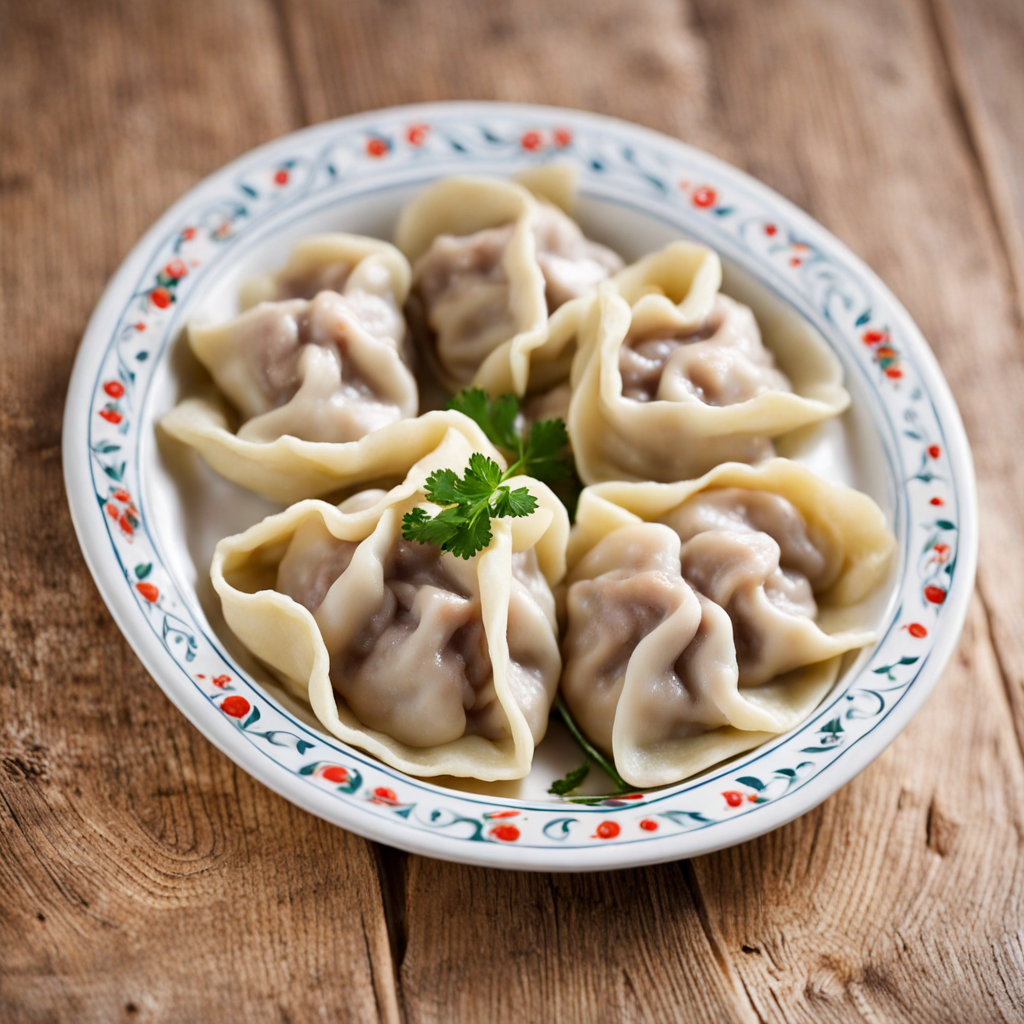Kholodets
Kholodets is a traditional Russian dish that beautifully embodies the country's rich culinary heritage. This cold meat jelly is typically made from pork or beef, simmered slowly to extract the natural gelatin from the bones and connective tissues. The result is a flavorful broth that is then cooled, allowing it to set into a jelly-like consistency. Often, Kholodets is adorned with vegetables like carrots and garlic, adding layers of flavor and a pop of color to the dish. The jellied meat is sliced into delicate portions and served chilled, making it a delightful addition to any festive table or family gathering. What makes Kholodets particularly unique is its texture—a delicate, wobbly jelly that melts in your mouth, combined with tender chunks of meat that provide a hearty contrast. The dish is often accompanied by a dollop of mustard or horseradish, which enhances the flavors and adds a zesty kick. Each bite is a harmonious blend of savory and slightly tangy notes, making it a fascinating exploration for those new to Russian cuisine. Kholodets is not just a dish; it's a representation of Russian hospitality and tradition. Often prepared during holidays and special occasions, it brings families together around the table. The dish's origins can be traced back to ancient times, and while recipes may vary from region to region, the essence of Kholodets remains the same—a comforting, flavorful jelly that honors the bounty of the land and the culinary skills passed down through generations.
How It Became This Dish
The History of Холодец: A Chilled Culinary Tradition from Russia Холодец, pronounced "kholodets," is a traditional Russian dish that embodies the rich tapestry of Russian culinary history, culture, and social practices. Often referred to as "meat jelly" or "aspic," kholodets is made by simmering meat—often pork or beef—along with bones and various spices until the collagen in the connective tissues dissolves into a gelatinous broth. Once cooled, this broth solidifies into a firm jelly, which is typically served cold and can be garnished with vegetables, herbs, and sometimes served alongside mustard or horseradish. #### Origins: Ancient Roots The origins of kholodets can be traced back to ancient Slavic culinary practices. The use of gelatinous meats dates back to the medieval period, when preservation techniques were vital for survival in the harsh climates of Eastern Europe. The boiling of meat and bones was not merely for nutrition; it was a means of prolonging the shelf life of food. The resulting broth, when cooled, would naturally gel due to the high collagen content. This method of preparation was economical, utilizing every part of the animal, and allowed families to store food for the winter months. The earliest culinary texts that mention similar dishes date back to the 12th century, but the widespread popularity of kholodets began to flourish during the 17th and 18th centuries. It became particularly favored among the nobility, who would adorn their tables with elaborate feasts featuring aspics and other gelatinous dishes. Russian cookbooks from this era reveal the intricate techniques and lavish presentations that marked these early versions of kholodets, often showcasing the culinary skills of the era. #### Cultural Significance Kholodets has transcended its humble beginnings to become a staple of Russian festive celebrations and family gatherings. In the Russian culinary lexicon, it is not merely a dish; it represents a sense of home, warmth, and tradition. Often served during significant holidays such as New Year’s Eve, Christmas, and weddings, kholodets embodies the spirit of communal dining. Its preparation can be a family affair, with several generations often coming together in the kitchen to create this beloved dish. In Russian culture, food is deeply intertwined with rituals and traditions. Kholodets is frequently associated with hospitality; serving it to guests signifies a welcoming and generous spirit. The dish is also a symbol of heritage and continuity, as recipes have been passed down through generations, adapting to regional variations while maintaining core elements. In addition to its role in festive occasions, kholodets carries with it a sense of nostalgia for many Russians, evoking memories of family gatherings and traditional celebrations. This emotional connection enhances its cultural significance, making it much more than just a dish but rather a vessel of shared experiences and memories. #### Development Over Time As Russian society evolved, so too did kholodets. The 19th century witnessed significant changes in Russian cuisine, influenced by socio-political shifts and the introduction of new ingredients and cooking methods. The arrival of French culinary techniques in the Russian aristocracy during this period led to the refinement of kholodets, with chefs experimenting with flavors, presentations, and garnishes. During the Soviet era, kholodets remained a popular dish, symbolizing the resourcefulness of the populace. The concept of using inexpensive cuts of meat and bones became a necessity due to food shortages, and kholodets served as a nutritious, filling dish that families could enjoy. It was also during this time that kholodets began to be made with a wider variety of ingredients, including chicken, fish, and even vegetables, as new combinations emerged. The dish continued to maintain its place in the Russian culinary landscape into the 21st century, adapting to contemporary tastes and dietary preferences. Modern interpretations of kholodets often include innovative variations that incorporate health-conscious ingredients or even vegetarian alternatives. In urban areas, where traditional foods may be overshadowed by international cuisine, kholodets has found a niche among enthusiasts of authentic Russian fare, ensuring its continued relevance. #### Regional Variations Kholodets is not monolithic; it exhibits a delightful range of regional variations across Russia and neighboring countries. In Ukraine, for instance, a similar dish known as "Holodets" holds a prominent place in holiday celebrations, often featuring a blend of meats and spices that reflect local tastes. In Belarus, "Zelentsy" is served as a cold meat dish but may incorporate various fillings, including boiled eggs or vegetables. Each region has its unique take, influenced by local traditions, available ingredients, and historical contexts. These variations highlight the adaptability of kholodets and its ability to resonate with diverse communities. #### Conclusion: A Timeless Tradition Kholodets stands as a testament to the enduring nature of traditional food and its ability to bring people together. From its ancient origins as a practical means of preserving meat to its status as a cherished centerpiece of festive tables, kholodets encapsulates the spirit of Russian culture. The dish not only nourishes the body but also feeds the soul, weaving connections between generations and fostering a sense of belonging. As globalization continues to influence culinary practices worldwide, kholodets remains a beloved part of Russian heritage, cherished by those who seek comfort in tradition while still embracing innovation. Whether served in a rustic home or a contemporary restaurant, kholodets endures as a symbol of hospitality, family, and the rich history of Russian cuisine.
You may like
Discover local flavors from Russia







